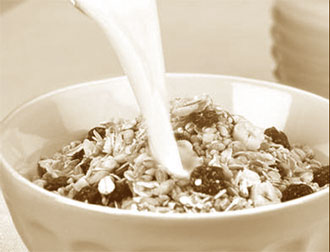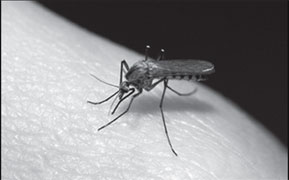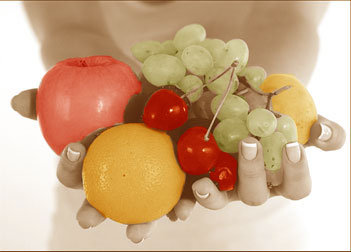|

A sensational breakthrough:
The first bionic hand that can feel
The first bionic hand that allows an amputee to feel what they are
touching will be transplanted later this year in a pioneering operation
that could introduce a new generation of artificial limbs with sensory
perception.
The patient is an unnamed man in his 20s living in Rome who lost the
lower part of his arm following an accident, said Silvestro Micera of
the Ecole Polytechnique Federale de Lausanne in Switzerland.
 The wiring of his new bionic hand will be connected to the patient’s
nervous system with the hope that the man will be able to control the
movements of the hand as well as receiving touch signals from the hand’s
skin sensors. The wiring of his new bionic hand will be connected to the patient’s
nervous system with the hope that the man will be able to control the
movements of the hand as well as receiving touch signals from the hand’s
skin sensors.
Dr Micera said that the hand will be attached directly to the
patient’s nervous system via electrodes clipped onto two of the arm’s
main nerves, the median and the ulnar nerves.
This should allow the man to control the hand by his thoughts, as
well as receiving sensory signals to his brain from the hand’s sensors.
It will effectively provide a fast, bidirectional flow of information
between the man’s nervous system and the prosthetic hand.
“This is real progress, real hope for amputees. It will be the first
prosthetic that will provide real-time sensory feedback for grasping,”
Dr Micera said.
“It is clear that the more sensory feeling an amputee has, the more
likely you will get full acceptance of that limb,” he told the American
Association for the Advancement of Science meeting in Boston.
“We could be on the cusp of providing new and more effective clinical
solutions to amputees in the next year,” he said. An earlier, portable
model of the hand was temporarily attached to Pierpaolo Petruzziello in
2009, who lost half his arm in a car accident. He was able to move the
bionic hand’s fingers, clench them into a fist and hold objects.
He said that he could feel the sensation of needles pricked into the
hand’s palm.However, this earlier version of the hand had only two
sensory zones whereas the latest prototype will send sensory signals
back from all the fingertips, as well as the palm and the wrists to give
a near life-like feeling in the limb, Dr Micera said. “The idea would be
that it could deliver two or more sensations.
"You could have a pinch and receive information from three fingers,
or feel movement in the hand and wrist,” Dr Micera said. “We have
refined the interface [connecting the hand to the patient], so we hope
to see much more detailed movement and control of the hand,” he told the
meeting.
The plan is for the patient to wear the bionic hand for a month to
see how he adapts to the artificial limb.
If all goes well, a full working model will be ready for testing
within two years, Dr Micera said.
One of the unresolved issues is whether patients will be able to
tolerate having such a limb attached to them all the time, or whether
they would need to remove it periodically to give them a rest.
Another problem is how to conceal the wiring under the patient’s skin
to make them less obtrusive.
The electrodes of the prototype hand to be fitted later this year
will be inserted through the skin rather than underneath it but there
are plans under development to place the wiring subcutaneously, Dr
Micera said.
-The Independent
Dieters who eat high-fibre food consume more calories
Manufacturers’ measurements do not take into account the caloric
value of fibre
Food manufacturers and government agencies have consistently misled
consumers over many years about the number of calories contained in
food, nutritional experts said.
 Calorie-counting people trying to lose weight do not realise that the
official system for assessing the caloric value of food is seriously
flawed and incapable of providing accurate estimates of the amount of
energy in a product, they said. Calorie-counting people trying to lose weight do not realise that the
official system for assessing the caloric value of food is seriously
flawed and incapable of providing accurate estimates of the amount of
energy in a product, they said.
Food companies for instance do not take into account the caloric
value of fibre in food with the effect that some high-fibre foods which
are sold as low in calories may actually contain, in the extreme, up to
25 percent more calories than the label suggests.
It means that some high-fibre food targeted at people on a diet are
actually more fattening than people are led to believe, said Geoffrey
Livesey, an independent nutritionist based in Britain who has advised
the UN’s Food and Agriculture Organisation.
“The problem is the system did not consider fibre, but it has a big
impact on the variance of energy content in food. What the old system
gave us is a very general calorific value,” Dr Livesey said.“In Britain,
we have not assigned a value for fibre, so calorie counts have normally
been lower - on average around five per cent of energy in food is
fibre,” Dr Livesey told the American Association for the Advancement of
Science meeting in Boston. “So consumers have been eating more calories
than they thought they were, particularly if the food was high-fibre.
When people eat muesli, it is a healthy food but they are often putting
on lots of weight,” he told the meeting.
High-fibre food
Consumers have been unknowingly consuming extra calorie in high-fibre
food for decades because the system for assessing calories goes back to
the 1970s and even earlier.
It means that if people follow the daily recommended intake of 18
grams of fibre, they could be consuming more than 250 extra calories
each week without realising it, Dr Livesey said.
Under new European guidelines, overseen by the Department of Health
and the Food Standards Agency, food companies are being asked to make
more accurate assessments of calories but it is unclear how many are
doing so, he said.It is not only the presence of fibre that has upset
the calorie estimates. Scientists have known for many years that the
calorie counts on food labels do not take into account the energy
expended by the body in eating and digesting a particular type of food,
said Richard Wrangham of Harvard University.Government assessments about
the amount of energy in food assume that the caloric value is the same
whether the food it cooked or raw, but scientists know that raw food
provides fewer calories because the body expends energy breaking it
down, Prof Wrangham said. “We are talking about at least a difference of
between 10 and 30 percent.. "So eating raw food is a good way to lose
weight, but you need to be careful about it long-term and it would not
be advisable in children,” he said.
“There is a lot of misinformation around calories, and it is crucial
for the consumer, whether they are on a diet or not, to have the correct
information about what they eat,” he told the meeting.“These problems
have been recognised by specialists for many years but have been
regarded as insufficiently important to warrant a change in the way that
food value is assessed. As a result the public is given erroneous
information about the energy value of many foods,” he added.
Counting calories
Calorie counts on food labels are based on a system developed by
Wilbur Olin Atwater, a late-19th-century American chemist. Under the
At-water system, carbohydrates and protein average 4 kcal per gram,
while fat provides 9 kcal per gram.
Fibre was assumed to pass through the body without being digested,
but soluble fibre and other constituents of fibre can be broken down in
the gut to release energy. In some respects, the At-water system
overestimates the number of calories provided in food by not taking into
account the energy needed to break the food down during digestion.The
At-water system is more accurate when considering the calorific value of
highly digestible food, such as white bread. But it is less accurate
with other kinds of high-fibre food, such as whole-wheat pasta and dried
figs.
- The Independent
Drug resistance greater in young Malaria parasites
New research has revealed that immature malaria parasites are more
resistant to treatment with key antimalarial drugs than older parasites,
a finding that could lead to more effective treatment for a disease that
kills one person every minute and is developing resistance to drugs at
an alarming rate.
 University of Melbourne researchers have shown for the first time
that malaria parasites (Plasmodium falciparum)in the early stages of
development are more than 100 times less sensitive to artemisinin-based
drugs, which currently represent a last line of defense against malaria. University of Melbourne researchers have shown for the first time
that malaria parasites (Plasmodium falciparum)in the early stages of
development are more than 100 times less sensitive to artemisinin-based
drugs, which currently represent a last line of defense against malaria.
The study was conducted by a team led by Prof Leann Tilley and Dr
Nectarios (Nick) Klonis from the Department of Biochemistry and
Molecular Biology and the Bio21 Institute, and is published in the
journal PNAS. The drug artemisinin (ART) saves millions of lives each
year but it is still not clear exactly how it works. Professor Tilley's
team developed a novel approach to examine how the parasite responds to
drugs under the conditions it encounters in the body.
This is important because the malaria parasite takes two days to
reach maturity in each cycle but the drug only remains in the
bloodstream for a few hours.“We were surprised to find that juvenile
parasites were up to 100 times less sensitive to the drug than mature
parasites, and that in some strains the juvenile parasites showed a
particularly high degree of resistance.
This would result in a large number of juvenile parasites surviving
against clinical treatment and helps explain how resistance to drugs
develops,” Professor Tilley said.
To survive in the human body, the parasite must inhabit red blood
cells for part of its life cycle, to do this it first digests the cell
contents including the haemoglobin protein which carries oxygen in
blood.
“We found that the parasite is most susceptible to drug treatment
when it is digesting haemoglobin, suggesting that a breakdown product,
possibly the haemoglobin pigment, is activating ART to unleash its
killing properties,” Dr Klonis said. The possibility of lower drug
sensitivity of juvenile parasites was first suspected when the team
studied the parasite's digestive system using a revolutionary 3D imaging
technique called electron tomography at the Bio21 Institute, University
of Melbourne.
This initial work was supported by the ARC Centre of Excellence for
Coherent X-ray Science.
“In juvenile stages the parasite's digestive system is not yet
active, which explains how this stage can avoid the effects of the
drug,” Prof Tilley said.“We hope that our findings will provide a guide
for changing the timing of the drug treatment regime and developing
longer lasting drugs, thereby killing more of the parasites and reducing
the development of drug resistance.”
- medicalxpress
Nutrition plays key role in athletic performance
By R. Gajatheepan
Are you an athlete? Do you want to become as an Olympic champion such
as Usain Bolt, Michael Phelps or the best player in the world? So, you
are the one who wants to take care of your nutrients and energy
requirements.
Do you know what type of food you should eat to increase your sports
performance? Nutrition plays a key role in athletic performance.
Physical activity increases daily energy expenditure. Therefore,
athletes have greater needs of energy nutrients, such as carbohydrates,
protein and fat than for non athletes. Failure to get enough calories
and nutrients will result in poor performance and an increased risk for
injuries or illness.
 To reduce these problems you should take a well-balanced diet which
contains a wide range of foods and covers daily energy requirement. Does
all type of events need the same nutrient composition? To reduce these problems you should take a well-balanced diet which
contains a wide range of foods and covers daily energy requirement. Does
all type of events need the same nutrient composition?
Energy and nutrient requirement vary, depending on sport type. There
are three types of events. They are low intensity, moderate intensity
and high intensity. If I were to explain about low, moderate and high
intensity exercises, while doing high intensity exercise you cannot sing
or talk, whereas doing moderate intensity exercise you cannot sing but
you can talk. On the other hand, while doing low intensity exercise you
can sing and talk.
Nutrients
Let us see a few key points on what, how and when to get nutrients to
perform at your best. Do you know, what is the main energy source to
fulfil your energy requirement? Most of you think that protein is the
most important nutrient. But it is a misconception. Whereas proteins are
important components of body tissues they are not the best source of
energy to fuel an athlete’s body. Carbohydrates is a more important
nutrient than protein. Proteins are converted as an energy source if
other nutrients, such as carbohydrate and fat cannot fulfil body’s
energy demand. Carbohydrates are a main fuel source for exercise,
especially during prolonged continuous exercise. When there is
inadequate carbohydrate storage to meet fuel needs, it will end in early
fatigue, reduced ability to train hard and reduced competition
performance.
Athletes take most benefits from stored carbohydrates in the body. It
is important to consume a lot of carbohydrates, such as whole grains
(corn, wheat, and rice), fruits and vegetables on a daily basis. In
addition to that, it is essential to consume a proper amount of
carbohydrate before, during and after events. There is no need of taking
extra carbohydrate, if the event lasts less than 90 minutes. On the
other hand, if the event lasts more than 90 minutes, you need to eat
high carbohydrates for two to three days before events. General training
athletes need to consume 5 to 7g carbohydrates per kg body weight per
day and high intensity athletes have to take 7 to 12 g carbohydrate per
kg body weight per day.
As athletes you have to focus on your meal before the event, during
the event and after the event. Most of us do not think about these
meals. You should consume easily digestible high carbohydrate diet three
to four hours before the event according to your body weight. You can
consume 1 to 4.5 g carbohydrate per kilogram body weight.
Meals
Consuming solid food is preferred rather than liquid meals, for
instance, you can consume fruits such as banana, grapes or apple, bread
with jelly or jam, nonfat yoghurt. Many athletes eat sugar or honey just
before an event to increase performance, but it does not give any extra
energy for the event. Consumption of carbohydrate during more than 45
minutes exercise can improve the athletic performance. It is better to
eat 30g to 60g of carbohydrates every one hour during exercise or
prolonged events, such as long distance running or cycling. You can
consume food or sports drinks.
Drinking sports drinks is better than consuming solid foods during
events. If you can, carry some easily carrying foods, such as sports
bars or biscuits with you and eat within 30 to 60 minutes before you
feel hungry or tired. Drink plenty of water with this food.
Increased consumption of dietary fat before competition enhances long
time event’s performance. But high fat meal just before competition does
not work on performance. Athletes, who want to gain weight, need more
protein in the early stages of exercise. Adolescent athletes are in need
of additional protein requirement.
Vitamin A is important for vision and bone health. It can be obtained
from liver, fish liver oil, egg york, fruit and vegetables. B vitamins
are needed for releasing energy from carbohydrate, protein and fat, for
growth. You can get the B vitamins, if you eat meat, rice, liver, green
leafy vegetable, egg and daily milk. Vitamin D is important for bone
formation to perform better. Fortified milk, egg and butter are good
sources for vitamin D and also if you expose to sunlight, you can get
vitamin D. Vitamin C also increases athletic performance. Citrus fruit
and berries contain Vitamin C. Calcium is important to strengthen bones.
Compared to other countries, the very poor role played by nutrition
in sports may be the reason for the gap in the athletics achievement
among Sri Lankans. The majority of the athletes believe in training than
nutrition, forgetting that the nutrition is the foundation for each and
every successful move in their body. |



